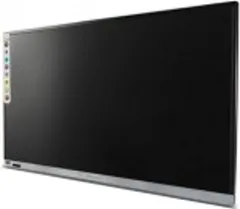There are three stages of television content:
There are four stages of television content: Programming, Acquisition and Scheduling, Content Distribution.Programming is the process of selecting a television show to put on air. This also includes new programming, where a network is looking to fill their time slot with something new. Acquisitions and Scheduling is when multiple networks are trying to buy the rights for new programming that they want on air. Content Distribution is when a company such as Netflix now sells shows online without going through televisions networks ike HBO. A fourth step in this process would be that once the content has been programmed then it will be broadcasted or streamed to televisions sets from companies like CBS All-Access or Hulu (TV).Content that is development stage would be in programming. It is the stage where programs are being looked for by companies. This could include TV programs, films, music, and books. Also it includes rights to show a program on television. The Acquisition and Scheduling stage includes the process of finding out on which channels a particular show would be broadcasted and the process of getting rights to put it in production. Content distribution is the process of taking over the rights to put up an online project without going through television properties such as HBO or Netflix.
Image source: https://www.flipkart.com/
1) Primary stage, also known as the first stage, is when a show is still in development. This includes both on-air and off-air activities. Off-air activities include everything from writing to producing to marketing. On-air activities are everything that happens on the TV screen while the show airs."Many people wonder how they can become a television producer at this point because it seems like it would be impossible for them to get any creative control over their project let alone have any say in what happens with their work. The answer is that some shows start out as very rough drafts, with no professional production values or even scripts completed yet.Most of the shows that get picked up by networks start as a treatment. This script is often developed from only a few pages of notes or even just a title and a very loose premise. Not only are the scripts not finished, but they are seldom even corrected before being filmed. There is no line producer, director or producer involved at this stage, simply because the network has no decision power on how the show is produced at this point. The network's ability to control how things turn out on set comes later, when it is given the power to hire directors, set designers and set decorators, editors and producers in addition to just being allowed to pick who has direct administrative control over whether or not certain things happen.
Image source: https://www.smartprix.com/
2) Second stage is when the series has been picked up for production and either a writers' room has been created or the show's staff hired. The writers are usually not involved in the first season, although sometimes they are brought in after a first season shooting schedule is finished. During this time, each episode takes on its own unique character as it is put together by individual writers over many months of development. As the episodes progress, they begin to be synthesized into something that resembles a coherent whole with clear and consistent characters and tone. This can involve rewriting scripts, recasting roles or even reordering stories to have them flow more naturally as part of one long story arc.


Comments
Post a Comment